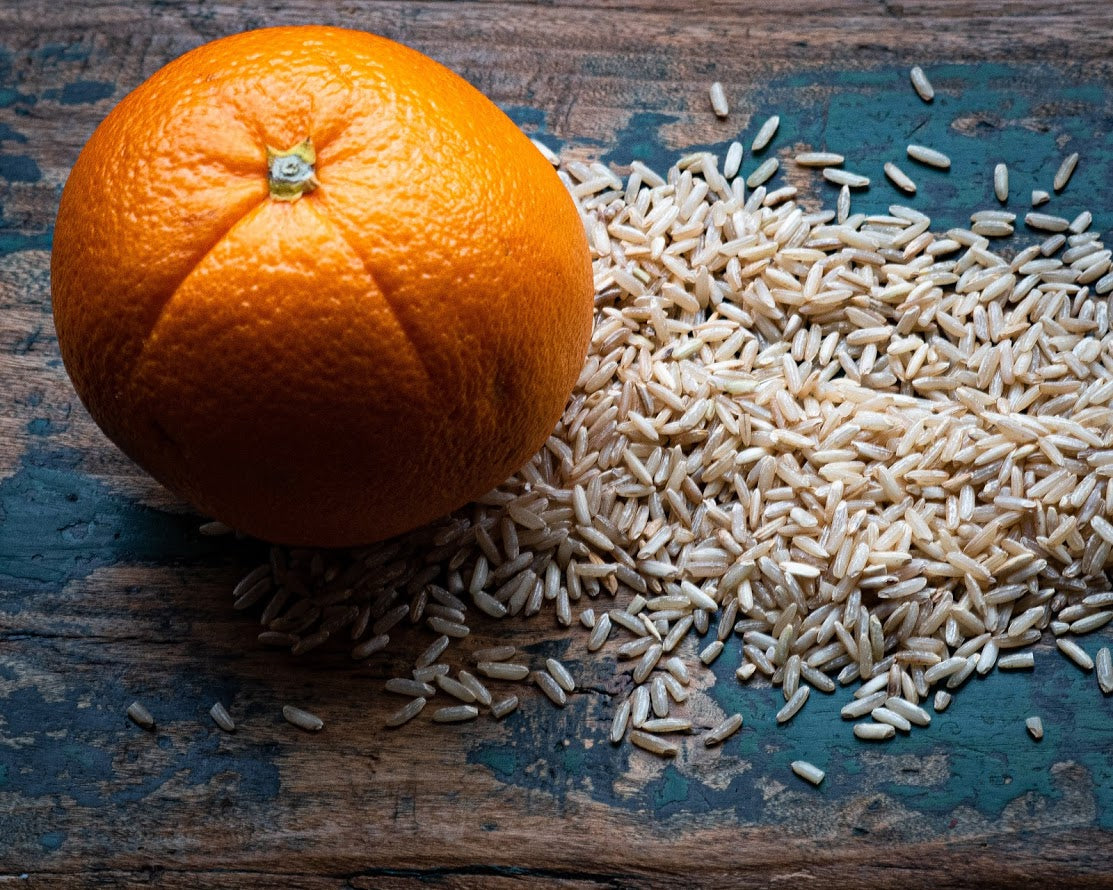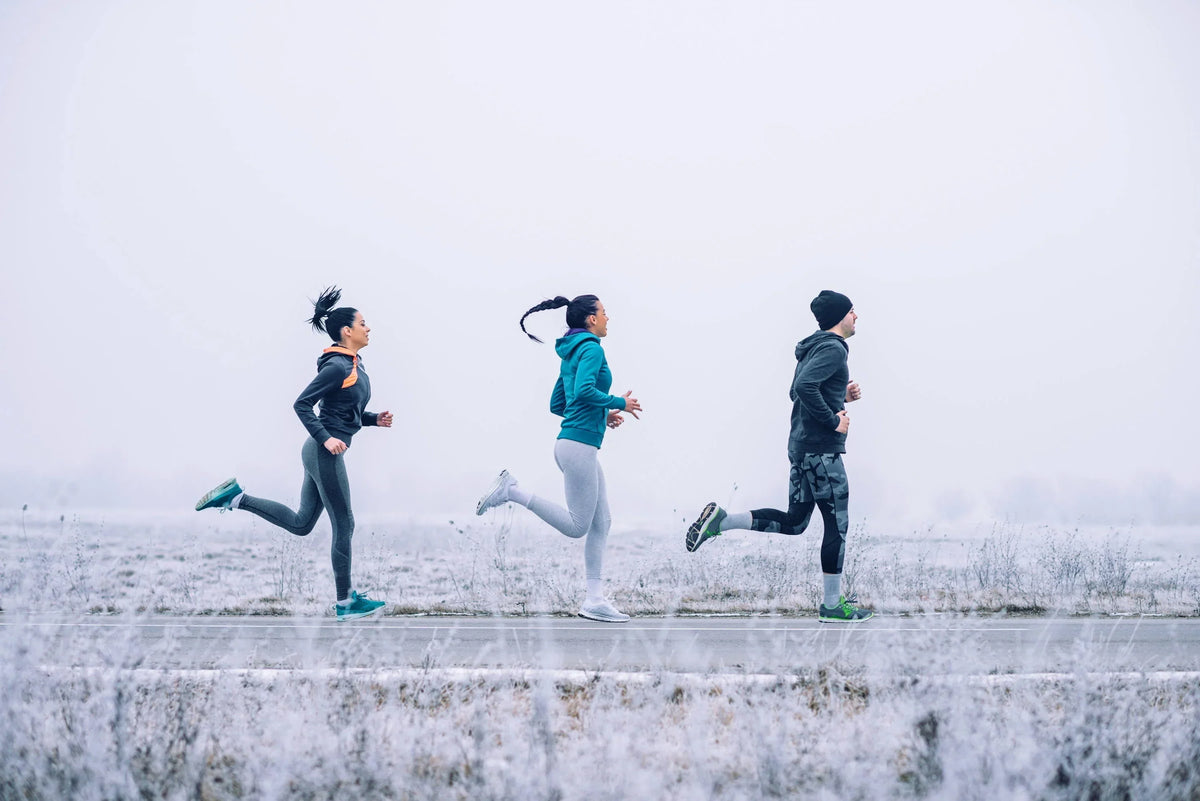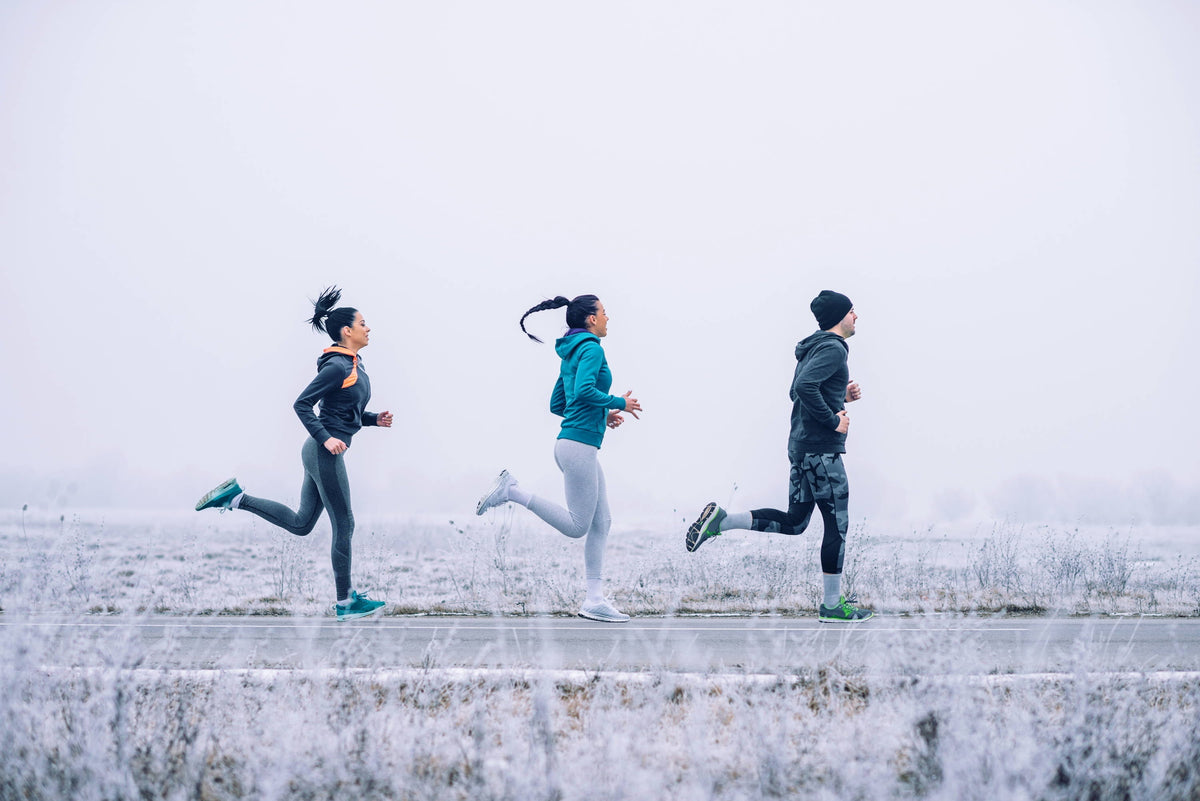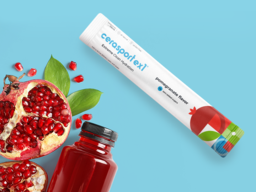Meeting High Fluid and Electrolyte Needs on a Low FODMAP Diet
February 23, 2021
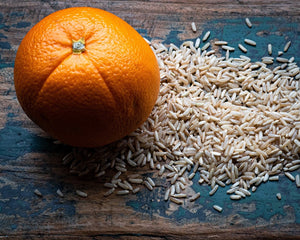
Meeting High Fluid and Electrolyte Needs on a Low FODMAP Diet
Written By: Trisha Stavinoha, MS, RD, CSSD, CSCS, TSAC-F
Intro: Did you know not all hydration solutions are alike? For people with IBS (irritable bowel syndrome), these subtle differences can significantly impact rehydration, especially when fluid needs are high. Cera Products has been making GI (gastrointestinal) friendly hydration solutions since 1993.
Individuals with IBS (irritable bowel syndrome) have unique needs when looking for a rehydration solution. Typical sports drinks and oral rehydration solutions (ORS) are made with sugar that include glucose and fructose. This is generally well tolerated when small servings are consumed. When someone has diarrhea or higher sweat losses from exercise, a standard serving may not sufficiently replenish fluid and electrolytes and a larger serving will irritate the bowel. Many athletes only have gut issues when they are training. This is known as “exercised induced IBS” (Miall 2018).
We learned in the early 1980’s that when the body is under stress, glucose is required to help absorb sodium and fluids (Greenough 2004, Gerold 2013). This stress could come from dehydration, diarrhea, exercise, or very hot conditions. This is the sodium glucose co-transport mechanism and enabled cholera patients to be treated with oral rehydration solutions instead of intravenous (IV) fluids and was described by a 1978 Lancet editorial as the most important medical advance of the 20th century (Nalin 2018). The problem with simple sugar is that too much will increase the osmolarity of the solution and pull water from the blood into the small bowel (Gerold 2013). There is a delicate balance between enough glucose to help absorb sodium and too much glucose causing diarrhea.
Research conducted from 1978-1982 revealed that substituting sugar with rice decreased diarrhea by about 30% (Greenough 2004, Gore 1992, Rahman 1985). Rice is composed of short, medium and long chains of glucose (Moore 2016). Where simple sugars have a high osmolality from the number of particles, rice has a very low osmolality due to the glucose polymers. Rice is naturally gluten free and is low-FODMAP.
Products manufactured by Cera Products, Inc. were developed based on the research on rice improving rehydration efforts in individuals with life-threatening dehydration (Gore 1992, Molla 1989, Rahman 1985). The company was established in 1993. Ceralyte® and Cerasport® were designed according to these principles: maximum utilization of the glucose mediated absorption of sodium and water, low osmolality, and proper electrolyte concentration to maintain electrolyte balance for either sweat replacement (Cerasport or Cerasport ex1®) or for diarrhea and dehydration (Ceralyte). Cera Products do not include artificial sweeteners or fructose as these ingredients would diminish the quality of the product.
Ceralyte for extreme dehydration.
Ceralyte is an ORS and can safely and effectively be used in place of IV fluids in extreme dehydration (Milner 2011, Sheikh 2016). Patients with high output from an ostomy, short bowel or IBS-diarrhea will require 2-3 liters or more of specialized hydration a day. The upper low FODMAP limit of Ceralyte 70 lemon is a 2-liter serving. The upper low FODMAP limit is the upper limit one should consume at a sitting or a 2 to 3-hour window. This means an individual can easily consume as much Ceralyte as needed throughout the course of their day without fearing GI (gastrointestinal) distress. Other frequent users of Ceralyte® include the following:
Patients with POTS (postural orthostatic tachycardia syndrome), who have low circulation volume, low blood pressure and decreased cardiac output require high fluid and salt to relieve lethargy, light headedness and fainting associated with the condition (Garland 2015).
Cancer patients whose treatment is causing dehydration from diarrhea, vomiting, excessive urination, or inadequate intake. Many will need IV fluids, which requires an additional trip to the hospital. Using Ceralyte will allow them to rehydrate at home. A sugar-based hydration solution will exacerbate the diarrhea.
Gastric bypass patients who are susceptible to dehydration and dumping syndrome from sugar would benefit from a low osmolality and low sugar hydration solution.
Athletes who cut weight in weight class sports such as MMA, boxing, or wrestling are not permitted to use IV fluids and must rapidly rehydrate with a solution formulated to be used in place of IV fluids.
Individuals whose sweat rate greatly exceeded fluid intake and are so dehydrated they need IV fluids. This could be athletes doing endurance events, military in training exercises, first responders on a mission or first responders attending to one of these scenarios. It is easier and faster for a first responder to carry and administer Ceralyte than IV fluids.
Cerasport® for sweat replacement:
Cerasport has the same ingredients as Ceralyte with electrolytes that closer match sweat losses. This formula is designed for sweat replacement during sports and exercise where water is not sufficient. Cerasport ex1 is a higher sodium sports drink and is best used during higher heat conditions, acclimatization to hot climates, and to rehydrate after high sweat losses.
Endurance sports in particular present a scenario where an athlete will need to consume more than a standard serving to rehydrate during or after their activity. One can safely and confidently consume enough Cerasport per hour to match their sweat rate.
These products are Monash University Low FODMAP Certified ™ - check the Monash FODMAP app or Cera Products website for further details.
|
|
Cerasport®
|
Cerasport ex1®
|
Ceralyte 70®
|
|
Flavor
|
Citrus
|
Pomegranate
|
Lemon
|
|
Serving Size
|
21 g stick (makes 16 oz)
|
12.5 g stick (makes 16 oz)
|
50 g pouch (makes 1 liter)
|
|
Calories
|
80
|
40
|
160
|
|
Carbohydrate
|
20 g
|
10 g
|
40 g
|
|
Sugar (added sugar)
|
4 (0) g
|
2 (0) g
|
8 (0) g
|
|
Sodium
|
230 mg
|
400 mg
|
1,610 mg
|
|
Chloride
|
336 mg
|
531 mg
|
2,124 mg
|
|
Potassium
|
80 mg
|
200 mg
|
800 mg
|
|
Osmolality
|
135 mOsm/L
|
135 mOsm/L
|
220 mOsm/L
|
|
Suggested Use
|
Basic sports drinks for sweat replacement and fueling during exercise
|
High heat conditions, fever, rehydrate after high sweat losses
|
Severe dehydration and diarrhea, use in place of IV fluids, POTS, cancer side effects, high ostomy output, weight cutting
|
|
Upper Low FODMAP limit
|
4.8 sticks
2.5 liters reconstituted
|
14.5 sticks or
7 liters reconstituted
|
2 x 50-gram packets or
2 liters reconstituted
|
Monash University Low FODMAP Certified trademarks used under license in the United States by Cera Products, Inc. These products can assist with following the Monash University Low FODMAP dietTM. A strict low FODMAP diet should not be commenced without supervision from a healthcare professional.
Cera Products, Inc. When what you drink matters.
For more information on incorporating Cera Products into your nutrition plan, please reach out to their dietitian, Trisha Stavinoha, MS, RD, CSSD, CSCS, TSAC-F, at tstavinoha@ceraproducts.us.
Cera Products, Inc. 88 Main Street, Suite D1, Hilton Head Island, SC 29926 USA
Tel: 843.842.2600 Toll Free: 866.237.2598 Fax: 843.842.2601
email: customerservice@ceraproductsinc.com website: www.ceraproductsinc.com
©Copyright 2021 Cera Products, Inc. All Rights Reserved
References:
Garland E, Celedonio J, Raj S. Postural Tachycardia Syndrome: Beyond Orthostatic Intolerance. Curr Neurol Neurosci Rep. 2015; 15:60.
Gerold K, Greenough WB, Yaser S. Rice-based electrolyte drinks more effective than water in replacing sweat losses during hot weather training and operations. Journal of Special Operations Medicine. 2013; 13:4.
Gore SM, Fontaine O, Pierce NF. Impact of rice based oral rehydration solution on stool output and duration of diahhhoea: meta-analysis of 13 clinical trials. BMJ. 1992; 304:287-291.
Greenough WB. The human, societal, and scientific legacy of cholera. Journal of Clinical Investigation. 2004; 3:334-339.
Miall A, Khoo A, Rauch C, Snipe R, Camoes-Costa V, Gibson P, Costa R. Two weeks of repetitive gut-challenge reduce exercise-associated gastrointestinal symptoms and malabsorption. Scand J Med Sci Sports. 2018; 28:630–640.
Milner SM, Greenough WB, Asuku ME, Feldman M, Makam R, Noppenberger D, Price LA, Prosciak M, van Loon IN. From cholera to burns: a role for oral rehydration therapy. Journal Health Popular Nutrition. 2011; 6:648-651.
Molla AM, Nath SK, Molla A, Khatun M. Food-based oral rehydration salt solution for acute childhood diarrhea. The Lancet. 1989; August 19.
Moore B, O’Hara RB. Mitigating exertional heat illness in military personnel. The science behind a rice-based electrolyte and rehydration drink. Journal of Special Operations Medicine. 2016; 16:4.
Nalin DR, Cash RA. 50 years of oral rehydration therapy: the solution is still simple. The Lancet. 2018; 392.
Rahman AS, Bari A, Molla AM, Greenough WB. Mothers can prepare and use rice-salt oral rehydration solution in rural Bangladesh. The Lancet. 1985; 2:539-40.
Sheikh F, Colburn J, Shapiro A, Greenough WB. Oral rehydration therapy as an alternative to intravenous therapy in dehydrated older people. Annals of Long-Term Care. 2016. February.
Share:
Leave a comment
Comments will be approved before showing up.

